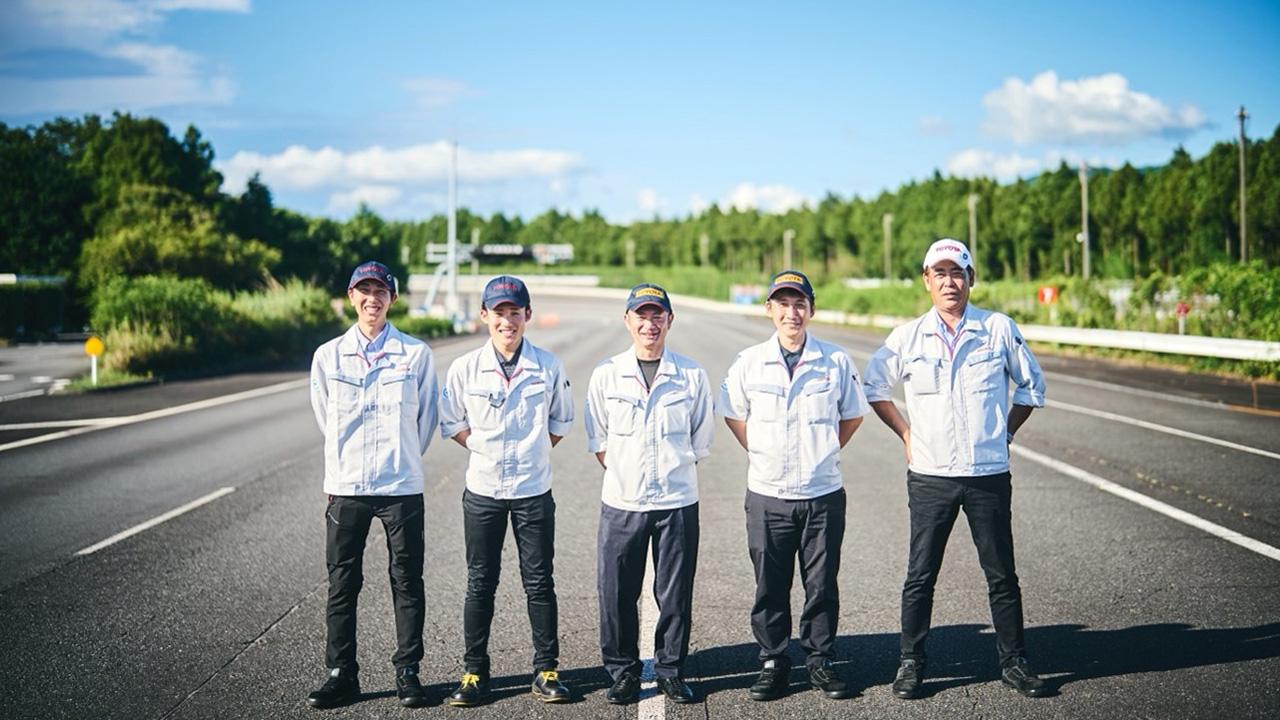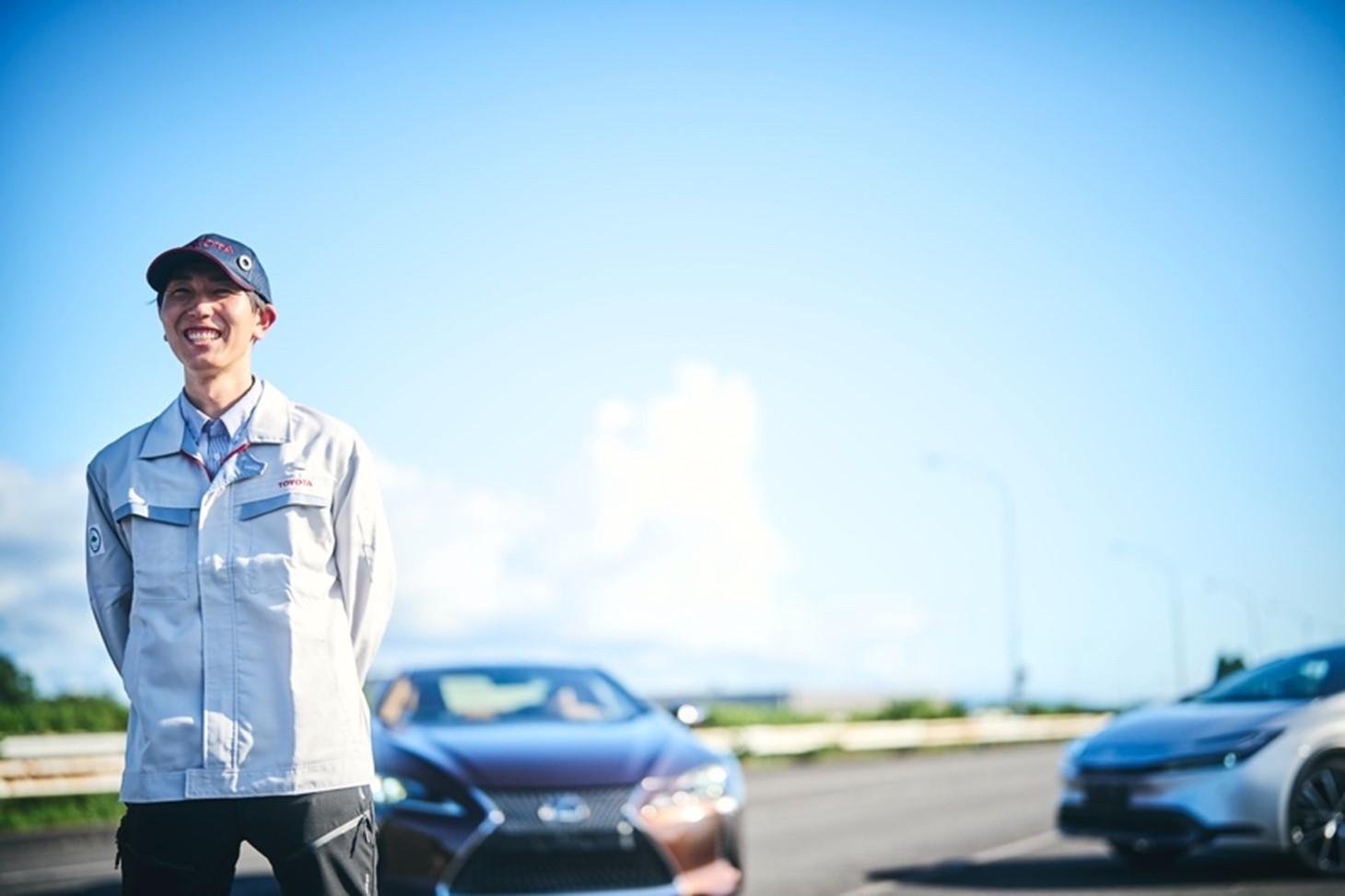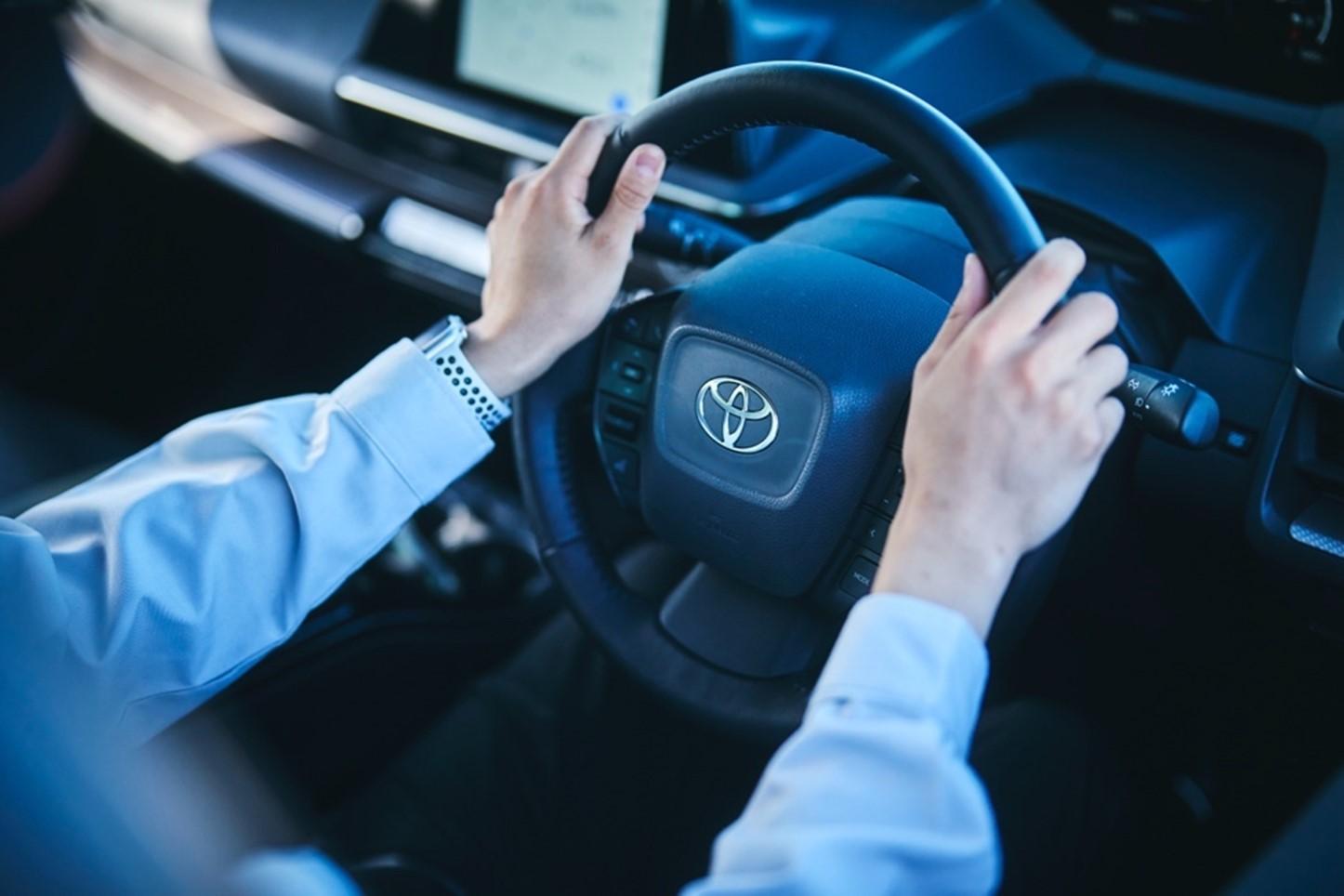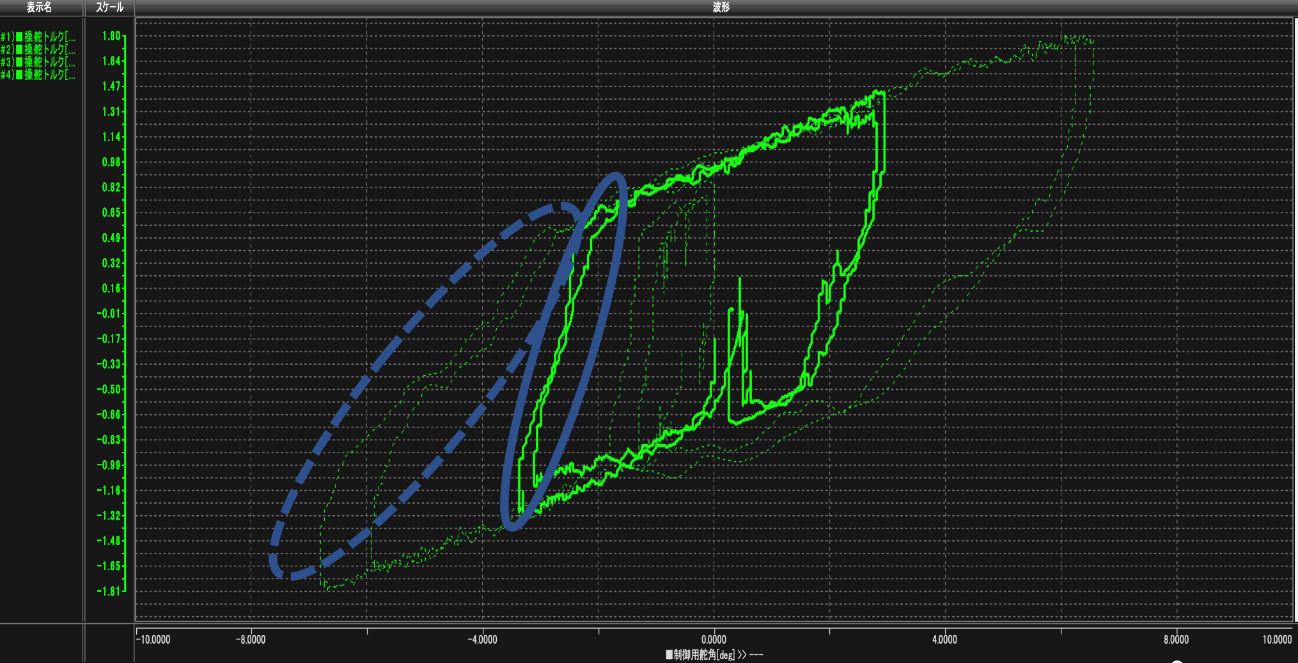
We're back with the second installment of our experiment comparing the perception skills of young and veteran test drivers. The question at hand: Is there a difference in how accurately they can replicate a car's movements?

The top-notch test drivers called “top guns” are part of our Advanced Technical Skills Institute Division. Following up on our previous installment, we visualized and assessed the perceptual abilities of a 24-year-old young driver and a veteran, examining the differences in their capacities to “do, understand, and tell” as test drivers.
This time, the theme was “turning” and “stopping,” with a young driver once again challenging a veteran.
A young car enthusiast who’s even competed in rallies takes on a veteran
We jumped right into the “turning” test drive. Specifically, we assessed steering stability by seeing if the vehicle turns as intended in response to steering and accelerator operations.
Participating as a specialist in steering stability was veteran Eisuke Sasaki from the Advanced Technical Skills Institute Division’s N Team. He has been passionate about bikes and tinkering with machinery since childhood and aspired to become a mechanic during his student years.
Starting this season, he’s racing in the Super Taikyu Series in a GR86 as a company driver, focusing on making ever-better motorsports-bred cars. He’s already made a name for himself, taking the podium in the ST-Q class, which features development vehicles.

The young challenger facing veteran Eisuke Sasaki is Yuki Shimoyama, who joined the company in 2019.
Shimoyama

My parents used to take me to races ever since I was little, so I’ve always been really interested in cars. During my first year at Toyota Technical Skills Academy, I heard that the Advanced Technical Skills Institute Division was hiring, which is a department known for its involvement in racing, so I put myself forward.
Shimoyama is such a car lover that he drives his own TOYOTA 86 in rallies. “Being a test driver is my dream job,” he says, a huge smile on his face.

Like young driver Sagara, featured in the first part, Shimoyama was chosen while attending the Toyota Technical Skills Academy as part of a project to evaluate whether he could develop into a test driver by quickly obtaining an S2 license. He secured his S1 license at age 23 and is targeting the S2 by age 26.
The need for steering evaluation at 3-degree precision
For this test, veteran Sasaki and young Shimoyama took on the challenge of a lane change as part of the steering stability test.
Typically, a driver on a highway might turn the steering wheel about 10 degrees for a lane change.
In our test, they performed a lane change with a steering angle of just about 3 degrees twice, competing to see how consistently they could replicate the maneuver.

Veteran Sasaki explains the importance of this test.
Sasaki
Most drivers don’t usually make conscious steering adjustments as slight as 3 degrees when driving.
However, we focus on these minor steering operations, feeling the steering weight and car movement, to create cars that resonate with human sensibilities.
In fact, drivers unconsciously make minor steering adjustments to stay straight on highways. By refining these subtle steering areas, we can create cars that are reassuring and comfortable to drive on highways.
In the test, we recorded driving data when changing from the right lane and then returning to the original lane. The graph below captures the steering operations during this maneuver.

The solid line represents veteran Sasaki’s movements, and the dotted line shows young Shimoyama’s. Each line appears twice, corresponding to their two trial runs.
In the graph, pay special attention to the section encircled in blue. It shows the steering actions from turning to returning. While the two solid lines of the veteran Sasaki overlap, demonstrating his consistency, the dotted lines of the young Shimoyama do not, indicating inconsistency.
Sasaki manages to perform the steering returning operation similarly in two runs. In contrast, Shimoyama shows variation in the force applied with each run, failing to operate consistently. This indicates that Shimoyama’s replication of the car’s movements is unstable.
Furthermore, Sasaki’s lines form a parallelogram, indicating symmetrical force in both turning and returning. In contrast, Shimoyama’s actions show a quicker return than the turn, resulting in an imperfect parallelogram.
Notably, while Sasaki performs delicate steering adjustments of about 3 degrees to the left or right, Shimoyama’s movements extend up to 7 degrees, as the graph shows.
The data indicates that test drivers’ high sensitivity improves their understanding of a car's performance, leading to more consistent and accurate evaluation outcomes as well as the reproduction of car phenomena.

Sasaki
As a test driver, it’s crucial to be able to operate with a keen sense of even the slightest force applied. This requires a constant focus on driving, accumulating a wealth of experience, and honing skills.
For example, a test driver consciously fine-tunes those minor steering adjustments, which a general driver makes unconsciously when driving straight on a highway, to ensure that our customers can drive more effortlessly.
The ideal state for a car is to operate without causing any sense of discomfort to the driver, like feeling either dull or overly sensitive when steering. We’re dedicated to refining our cars daily to achieve this ideal.
Following this, we conducted a “stopping” driving test. Does the ability to accurately perceive deceleration G-forces differ between young and veteran drivers? The truth behind this is now revealed.

